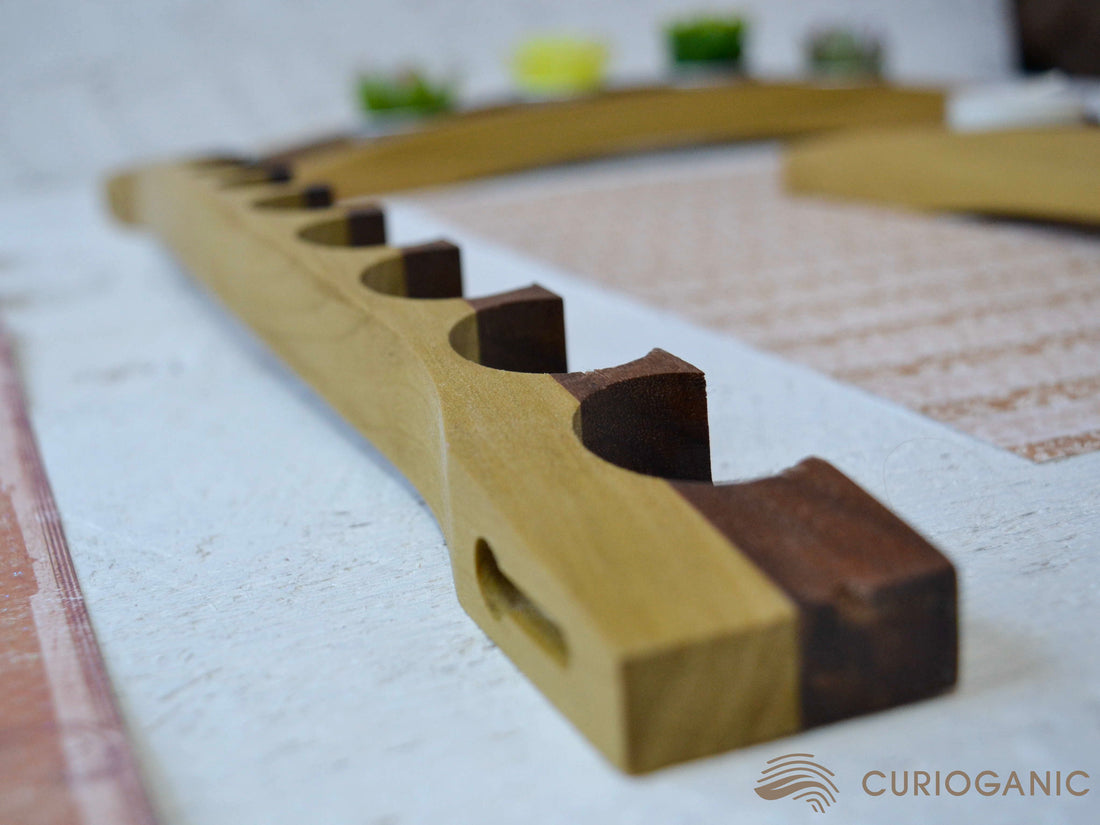Caring for Wood Products
Wood is a natural, organically beautiful material. It is strong, versatile, and can be worked into many shapes and designs. It comes in many flavors of color, grain movement, hardness, texture, and weight. Wood is organic, renewable, non-toxic, and environmentally friendly. What a great choice!
At Curioganic, we focus on artwork, creations, and accessories that are designed to be used indoors. Because of this, here we are primarily discussing proper care for items that live indoors.
As wood is a living material, it's good to think of the life of our wood decor and other creations as a continuing journey. You can extend and enhance the life of wooden toys, wall hangings, and accents with good care! We hope the tips below will help you get the most out of the wood products in your home!
What Can Cause Wood Products to Age?
The original brilliant colors and lustre of wood decor and furniture can fade over time. But, with the right care, you can preserve your items' original beauty for many decades! Here are some ways you can do this:
- Avoid placement in direct sunlight. UV rays from the sun will gradually cause colors to lighten and fade.
- Keep away from radiators, heater vents, fireplaces, cold windows, or other places where there are major temperature fluctuations. Wood expands as it is heated and contracts when cooled. It likes to live at a consistent temperature!
- Significant changes in humidity can also cause wood to shrink (if humidity is low, such as in the desert) or expand (if humidity is high). This can cause wood to develop small cracks or surface defects. Because wood is very moist when cut from a tree (100% moisture content), lumber is typically aged or kiln dried to get moisture content down to 20% or lower before it is used. If the humidity in your home is above 50%, it may be a good idea to use a dehumidifier for your own health, as well as the health of your wood furnishings and decor!
What is the Best Way to Clean Wood Items?
First, it's good to know what type of finish you may be dealing with. Is there a glossy, shiny finish? If so, the wood is probably sealed with a lacquer, shellac, or other non-breathable finish. Shiny finishes can be easily scratched and should be cleaned carefully.
If the wood has more of a matte look and you can feel the texture of the grain and see its pores, it likely has a natural oiled finish such as linseed, tung oil, danish oil. If the wood is light in color, it could even be unfinished.
At Curioganic, we like to finish our products with rubbed-in oils or no finish at all, so we'll make a few suggestions for oiled/unfinished items.
- Remove dust with a dry, lint-free cloth. Do not use spray cleaners!
- If cleaning is needed, use a cloth or soft sponge with water. You can add a few drops of mild soap. It's always a good idea to start in an inconspicuous place, such as the back of a wall hanging, to make sure you are getting good results.
- On naked finish pieces, stains and other marks can be sanded out with light sandpaper (160 grit or higher).
Refinishing your Wood Item from Curioganic
Products from Curioganic typically ship with a natural rubbed oil finish, or naked (no finish). If you wish to refresh or refinish your item, we recommend the following options:
- Danish Oil. Our finishing oil of choice! Danish oil can be found with many color tints, but we prefer using a neutral oil so the natural color tones of the wood can be seen. Danish oil can be applied with a brush or a cloth directly to the wood piece. Let the oil sit on the wood for 5-10 minutes, then rub off the excess with a lint-free cloth. (old t-shirt material works pretty well for this.) Danish oil dries quickly and can be easily touched up or refreshed over time.
- Linseed Oil. Similar to Danish Oil, but can discolor slightly over time. Linseed Oil is somewhat susceptible to mold. Does not add any UV protection. Slower to dry than Danish Oil.
-
Tung Oil. Solidifies on wood surfaces after applied, creating a tough but elastic outer coating. Good moisture resistance. More durable finish than Linseed or Danish oil. Slowest of these three options to cure (typically several days).
One of the great things about wood is that it's a material that is easily revitalized! A well cared-for item can last decades and still look great.

